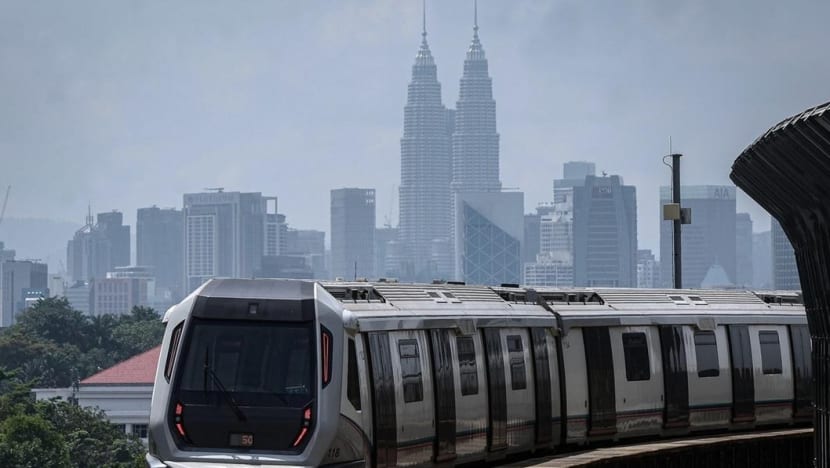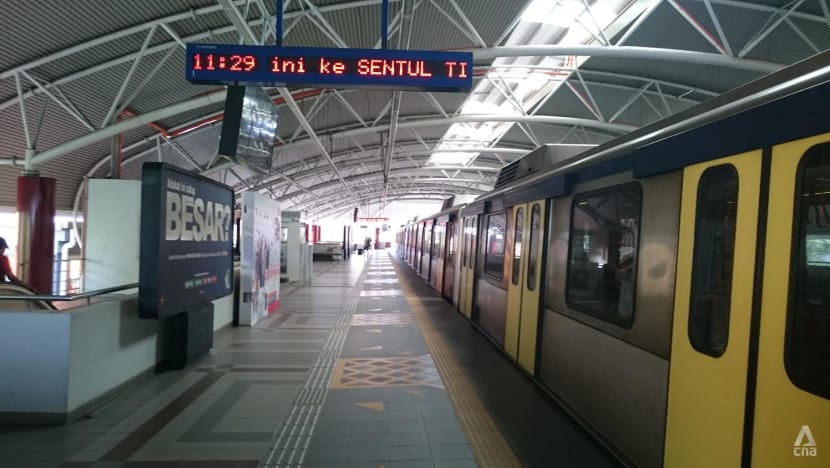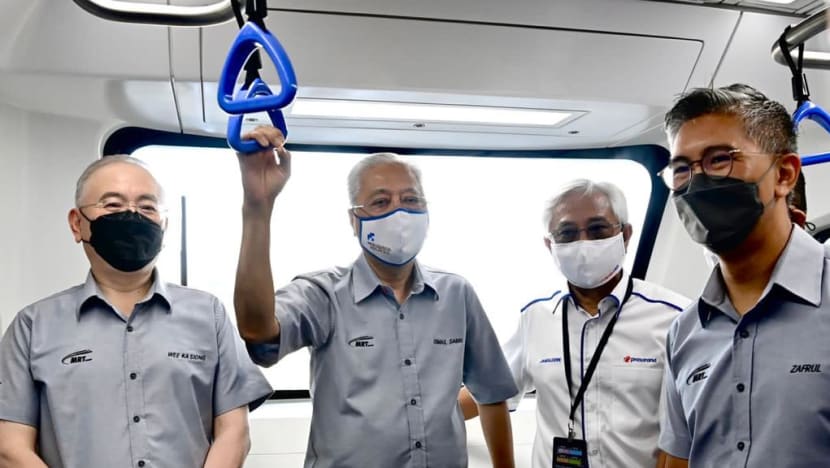Commuters in Malaysia's Klang Valley are addicted to their cars. What can be done to encourage use of public transport?

Klang Valley is served by a rail network comprising commuter rail, light rapid transit, mass rapid transit and monorail. (File photo: Bernama)
KUALA LUMPUR: Freelance public relations consultant Priya Menon lives on the border of Subang Jaya and Shah Alam, urban townships in the state of Selangor in Malaysia.
She relies on her own car to meet her transportation needs, as the nearest Light Rail Transit (LRT) station is over 10km away from her house. The Keretapi Tanah Melayu (KTM) railway station, while closer, is 5km away.
“I have to worry about my personal safety when walking on the side of the road, because there are no pedestrian walkways.
“Moreover, the bus stop is inadequately shielded from rain, poorly lit, and there are no bus schedules on display,” Ms Priya said, adding that she does not recall seeing buses serving her housing area despite the presence of a bus stop.
The rail network in Klang Valley, which covers the federal territory of Kuala Lumpur and the surrounding cities and municipalities in Selangor, has come a long way since the first intra-city rail transit system began operations in the mid-1990s.

Today, the Klang Valley’s urban population, which numbers over 8 million, is served by a number of LRT, KTM, Mass Rapid Transit (MRT) and monorail lines running on a labyrinth of elevated, underground and on-street guideways.
Following its extension in 2016, the Kelana Jaya LRT Line spans 46.4km from Putra Heights in the southwest of Klang Valley to the northeast terminal of Gombak.
The Ampang and Sri Petaling Lines jointly cover 45.1km and serve Kuala Lumpur as well as surrounding areas such as Cheras, Ampang, Puchong and Subang Jaya.
Meanwhile, the Kajang Mass Rapid Transit (MRT) Line travels 47km between the northwest district of Sungai Buloh and the southeastern municipality of Kajang.
There is also the recently-opened Putrajaya MRT Line, which will be further extended to connect the federal administrative centre to the suburb of Kampung Batu in Kuala Lumpur.
In March this year, the Cabinet agreed to revive the MRT 3 Circle Line, which will connect to existing MRT, LRT, monorail and KTM lines in the Klang Valley and cover a total length of 50.8km.
In addition to these mass transit lines within the Klang Valley, KTMB also provides rail connection to neighbouring states, the East Coast and states on the Thai border.
However, even with these rail lines in place, traffic jams are frequent in the city.
For many, especially those who do not live near a public transport node, using a car or a motorcycle is often the most convenient way to get around.
Some of those who use public transport also have grouses about inconsistent schedules or poor infrastructure.
To encourage more people to use public transport, the Malaysian government offered a month of free rides on LRT, MRT, KTM trains, and stage and feeder buses.
The announcement was made by Prime Minister Ismail Sabri Yaakob on Jun 16 in conjunction with the launch of the first phase of the MRT Putrajaya line.
The total cost, he said, would come up to RM155 million (US$35 million) for the one-month initiative.
Will the free rides nudge more people towards public transportation? Not unless its reliability is improved, according to both commuters and experts.

PRIVATE VEHICLE DEPENDENCE DRIVEN BY PAST POLICIES
Malaysians are known to be dependent on private vehicles, and there are several factors for this.
Public transport data analyst Aziff Azuddin said that reliance on private vehicles can be explained with the start of Malaysia’s road expansion policies in the 1960s, followed by the country’s first national car project Proton in the early 1980s.
Noting that these two factors were not mutually exclusive, Mr Aziff said it was the pro-car policies since the 1980s that resulted in the country’s rapid motorisation.
As Malaysia entered the car manufacturing industry, he explained, the government imposed high duties on imported cars.
“These protectionist policies made Proton, the national car, the only affordable option for Malaysians. Ultimately, rapid motorisation necessitated car-centric urban planning,” Mr Aziff pointed out.
Dr Nur Sabahiah Abdul Sukor, an associate professor in transportation engineering at Universiti Sains Malaysia, pointed to two particular factors - poorly-managed land use development and transportation systems - as significant reasons for the heavy reliance on cars.
Prior to developing a piece of land, she explained, traffic impact assessments (TIA) have to be conducted to identify the need for any transport infrastructure improvements.
The developers have to put in plans to minimise congestion, improve road safety and access, and also to mitigate the effects of the development projects.

However, Assoc Prof Nur Sabahiah noted that the TIA only considered the impact of motor vehicles, and as such, there is the tendency to widen roads to avoid congestion and accommodate future demand in car usage.
“Indirectly we keep on providing infrastructure that leads to car dependency.
“We have yet to put into practice the influence of land use development on all modes of transportation,” she said.
In contrast, Assoc Prof Nur Sabahiah said, many developed countries had long switched from road widening to offering access to public transportation, foot traffic and cyclists.
“In my opinion, the issue of heavy car dependency occurs because we failed to plan and forecast the demand for sustainable mobility when planning land use development,” she added.

No comments
Share your thoughts! Tell us your name and class for a gift (: